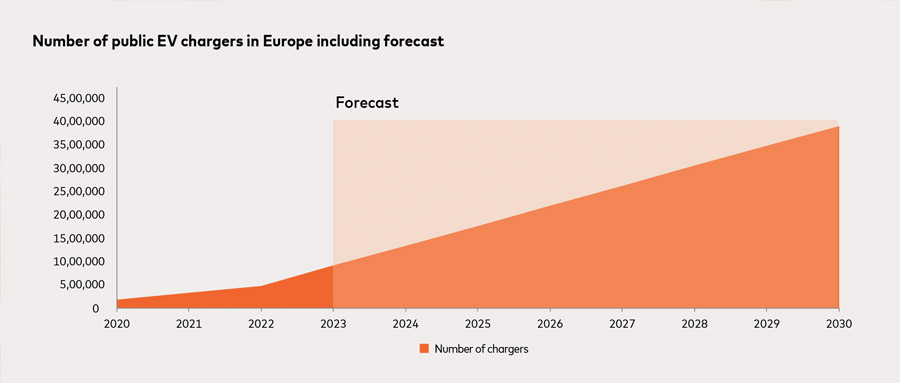21 March 2024
Electric Vehicles (EVs) are a growing part of the green transition in Europe and public charging stations will soon need to be more widespread. Ensuring people can seamlessly pay for charging is a key driver of the growth of electrical cars, according to a new report by payments consultancy firm PaymentGenes.
The number of EVs on the road in Europe has grown steadily over the last several years. As regulations push older cars off the roads and subsidies usher in the inevitable rise of the EV, that growth is likely to become even more accelerated before the end of the decade.
As part of the European Green Deal, legislation that will regulate Europe’s transition to sustainability, the European Commission has also proposed what is called the Alternative Fuel Infrastructure Regulation (AFIR). This regulation requires (open-loop) card payments on DC (fast) chargers, emphasizing the importance of a standardized payment method.

Source: PaymentGenes
The expectation is that Europe will see around 48 million passenger EVs on the roads by 2030 – with 40% of charging taking place at public charge points.
While most EV drivers (80%) currently charge their vehicles at home with private residential charging units, the huge increase in EVs will require an equally big increase in public charging points. Those public charging points are still far and few in between in Europe.
A previous report showed that the lack of charging stations in Europe could slow the transition to sustainability if a solution is not found soon. To make matters worse, paying at charging stations can often be annoying, with different apps and payment methods making it confusing.
Currently, the landscape for public EV charging payments is rather unorganized. A total of 90% of EV drivers in Norway (one of the countries with the highest level of EV adoption) reported that they believed navigating various charging apps, cards, and operators to be too complicated.

Source: PaymentGenes
Around 65% of consumers said that they prefer to pay for EV charging with a debit or credit card. That is the most popular form of payment by far. Regulators in Germany are moving to force charging points to accept card payments in Germany by later this year. In lieu of card payments, some charging points prioritize using subscriptions, fuel cards, or QR codes for payments.
“EV charging payments are just starting to take off. As B2C usage grows future growth becomes locked in into regulation, the case for innovation towards even better user experiences gets stronger and stronger,” notes the PaymentGenes report.
“Innovation across charging and payments creates new opportunities to improve customer experience and value within the electrical vehicles charging value chain.”
The lack of interoperability between different EV charging cards and networks is a top point of contention for consumers. Fixing that by standardizing the whole sector would be a huge step in the right direction Europe, which is looking to do all that it can to accelerate the green transition as climate change worsens and the public increasingly demands action.
“As a driver, you are often unsure if you can actually charge at the charge point of your choice, as it is unknown if you have the right payment method,” reads the report.
“Lack of standardisation and competition have led to a fragmented market, increasing range anxiety of EV drivers. To enable the electrification journey of European road transport, EV charging payment needs to be solved.”
